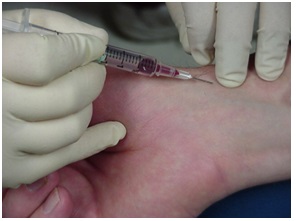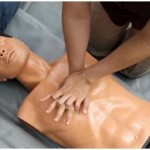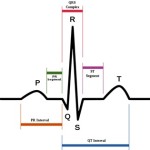Arterial blood gas (ABGs) is a test with a diagnostic purpose that is performed on blood taken from an artery which contains oxygen and carbon dioxide.
<< Back to Medical Nursing Videos
The purpose of what is arterial blood gas
ABG is a measurement of how well the lungs can provide adequate oxygen to the body and subsequently remove the carbon dioxide. This analysis of blood gas can help evaluate a person’s respiratory and metabolic status. The arterial blood gas test can also measure the blood PH and the integrity of the body’s acid-base balance.
ABG sampling gives valuable information on the acid-base balance at a specific point in the course of a patient’s illness. This procedure is the only reliable determination of ventilation success as evidenced by CO2 content. It constitutes a more precise measure of successful gas exam and oxygenation. With ABG sampling you have a way of accurately determining the alveolar-arterial oxygen gradient. The results of this measurement reflect the physiologic state of the patient as the time of the sampling; they have to be carefully correlated with the evolving clinical scenario and with any changes in the patient’s treatment.
Arterial Blood Gas – What Is It? – Videos
Videos on
this site are for demonstration purposes only. Please
do not attempt any of the procedures seen in these videos
without formal medical education & licensing.
Indications for ABG sampling:
- ABG sampling is used for identification of respiratory, metabolic and mixed acid-base disorders, with or without physiologic compensation.
- Measurement of the partial pressures
- Monitoring of the acid-base status, in patients with diabetic ketoacidosis, ABG and venous blood gas could be obtained simultaneously for comparison, with VBG sampling used for further monitoring.
- Indication for assessment of the response to therapeutic intervention like mechanical ventilation in a patient with respiratory failure
Other indications for ABG sampling:
- Assess oxygenation/ventilation
- Oxyhemoglobin quantification, combined with measurement of arterial oxygen tension, provides information about the oxygen-carrying capacity of the patient
- Assess acid/base status
- Procurement of a blood sample, this can be used just in acute emergency setting when the venous sampling is not feasible.
- Phlebotomy
ABG sampling Contraindications:
The contraindications for ABG sampling include the following:
- Local infection at the potential puncture site
- Presence of arteriovenous fistulas and vascular grafts; in this case arterial vascular puncture should not be attempted
- In case of suspected severe peripheral vascular disease of the limb involved
- Severe coagulopathy
The process of arterial blood sampling:
In order to perform the puncture you have to choose an artery. The radial artery is preferred because of the accessibility of the vessel and the presence of collateral circulation. The artery’s superficial course proximal to the wrist, this makes it easier for the clinician to identify the vascular structure and hold the local pressure after the procedure is finished. The possible alternative if the radial artery is not feasible is the femoral artery puncture, dorsalis pedis and posterior tibial arteries puncture.
Palpate the patient’s radial pulse with the index and middle finger pads. Follow the direction of the artery and clean the place of the puncture with antiseptic solution. Uncap the ABG syringe and hold it with two fingers. Insert the needle under the patient’s skin at 45 degree angle, palpate the radial pulse and aim in the direction of the artery. Once the needle enters the lumen of the radial artery, the syringe is going to be filled with arterial blood. After 2-3 ml of arterial has been obtained, remove the needle and use small piece of gauze to apply over the site of the puncture, press gently on it and hold it for 5 min.
Avoid checking the puncture site until local pressure has been maintained for at least 5 min. For all patients that are on anticoagulation therapy it is necessary to apply local pressure for a longer time. You have to check for hemostasis and apply an adhesive bandage over the puncture site. It is important to apply the needle protective sleeve. After you have applied the protective sleeve you have to untwist the sleeve and place it in the sharp object container. Remove the excess air in the syringe and make sure there aren’t any bubbles present to reach the top of the syringe. Cap the syringe and place it in the ice bag. This sample can be sent for analysis.
What Is Arterial Blood Gas sampling complications:
- Bleeding-hematoma
- Arterial occlusion-thrombus/dissection
- Infection- arteritis/cellulitis
- Embolization























